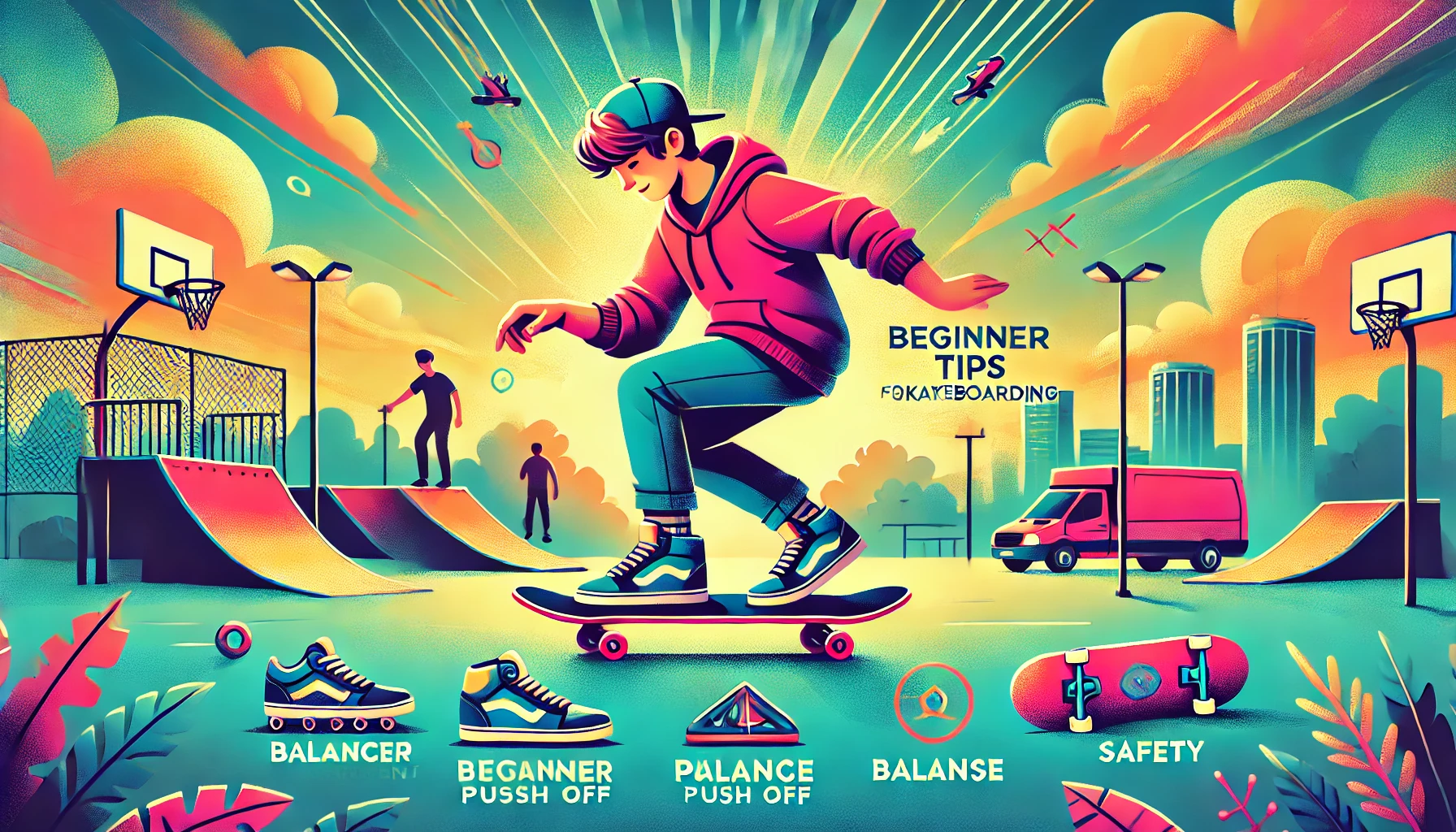Skateboarding is a thrilling and rewarding sport, but getting started can be a bit intimidating for beginners. Whether you’re aiming to cruise around your neighborhood, learn tricks at the skatepark, or simply have fun, it’s essential to build a solid foundation. In this guide, we’ll cover some essential beginner tips to help you get started on the right foot (literally!).
1. Choose the Right Skateboard
Before you start learning tricks, it’s crucial to have the right gear. Here’s what to consider when choosing your first skateboard:
- Deck Size: Beginners should opt for a deck between 7.5 to 8.0 inches wide. A wider deck offers more stability, making it easier to balance and learn the basics.
- Trucks and Wheels: Softer wheels (around 78A to 87A durometer) provide more grip and are better for beginners, especially if you plan on cruising.
- Skateboard Style: If you’re focused on street skating and tricks, a standard skateboard is best. If cruising and carving are more your style, consider a longboard or cruiser.
2. Get the Right Protective Gear
Safety should be your top priority, especially when starting out. Invest in quality protective gear:
- Helmet: A certified skateboard helmet is a must-have to protect your head.
- Knee and Elbow Pads: These will prevent injuries when you fall, which is common for beginners.
- Wrist Guards: Falling on your hands is a frequent occurrence, and wrist guards can help prevent fractures.
3. Learn the Basics of Standing and Balancing
Before jumping into tricks, you need to master the basics:
- Stance: Determine if you’re regular (left foot forward) or goofy (right foot forward). Practice standing on the board in your natural stance until you feel comfortable.
- Balance: Practice balancing on your board while stationary. Place your feet over the bolts with your knees slightly bent. Rock back and forth gently to get a feel for how the board moves under you.
4. Start with the Basics: Pushing and Stopping
Learning how to push and stop is essential before attempting more advanced maneuvers:
- Pushing: Place your front foot near the front bolts and use your back foot to push off the ground. Keep your knees bent and your weight centered over the board. Once you gain momentum, place your back foot on the board and glide.
- Stopping: The simplest way to stop is by dragging your back foot lightly on the ground. Another method is the “foot brake,” where you lower your back foot off the board while gently pressing it against the ground.
5. Practice Turning and Carving
Once you’re comfortable riding in a straight line, it’s time to learn how to turn:
- Leaning: To turn, lean in the direction you want to go. For a smooth carve, apply gentle pressure to your toes or heels while keeping your knees bent.
- Kickturns: For sharper turns, practice kickturns. Place your back foot on the tail of the board, lift your front wheels slightly off the ground, and pivot in the direction you want to go.
6. Start Slow with Tricks: The Ollie
The ollie is the foundational trick in skateboarding, and it’s the first trick most beginners aim to learn:
- How to Ollie: Place your back foot on the tail of the board and your front foot near the center. Pop the tail down while jumping and sliding your front foot up toward the nose. With practice, this motion will cause the board to lift off the ground.
7. Find a Safe Practice Spot
Choose a flat, smooth surface to practice your skills. An empty parking lot, a quiet street, or a beginner-friendly skatepark are great places to start. Avoid crowded areas until you’re confident with your balance and control.
8. Understand Skatepark Etiquette
If you plan to visit a skatepark, it’s essential to learn some basic skatepark etiquette:
- Wait Your Turn: Be aware of who’s skating and wait for your turn in crowded areas.
- Respect Other Skaters: Skateparks are for everyone, from beginners to pros. Respect others’ space and be considerate.
- Start in the Beginner Area: Many parks have designated beginner areas or sections with smaller ramps and obstacles. Stick to these areas until you build more confidence.
9. Don’t Rush: Take Your Time
Skateboarding has a steep learning curve, so it’s crucial to be patient. Progress may be slow at first, but with consistent practice, you’ll see improvements. Focus on mastering one skill at a time rather than jumping straight into complex tricks.
10. Have Fun and Stay Consistent
Skateboarding is all about enjoying the ride. Don’t get discouraged by falls or mistakes—they’re a natural part of learning. Stay consistent with your practice, celebrate small victories, and most importantly, have fun!
Conclusion
Skateboarding is a challenging but incredibly rewarding sport. By starting with the basics, practicing regularly, and keeping safety in mind, you’ll be well on your way to becoming a confident skater. Whether your goal is to master tricks or simply cruise around town, the most important thing is to enjoy the process. So grab your board, hit the pavement, and get ready to experience the thrill of skateboarding!

